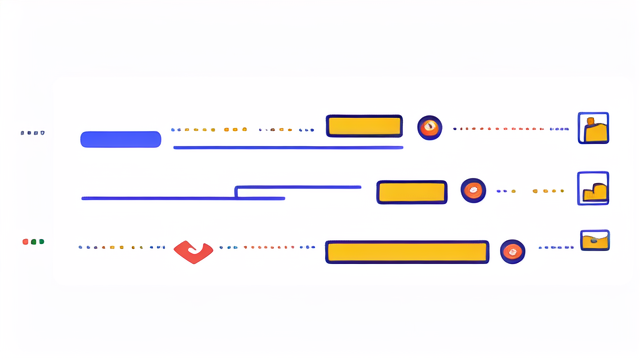Maximizing Visibility: How Google’s Helpful Content Algorithm Revolutionizes SEO Strategies
Understanding the Helpful Content Algorithm
What is the Helpful Content Algorithm?
Google’s Helpful Content Algorithm is a system used to rank web pages. It aims to reward content that truly benefits users. This algorithm prioritizes pages that provide actual value, not just keyword-rich text aiming to game the system. It’s part of Google’s effort to ensure that users get relevant, informative, and helpful content. Websites focusing on enriching user experience tend to rank better in search results.

The Significance of Algorithm Updates for SEO
Algorithm updates greatly impact SEO. They change how search engines rank content. Websites must adapt to stay visible. These updates can make or break online success. They tend to reward valuable, user-focused content. It’s important to stay informed on these updates. Understanding them is key to an effective SEO strategy.
Key Factors Influenced by the Helpful Content Algorithm
The Helpful Content Algorithm weighs various key factors to determine content value. These factors include:
- User engagement: Content that captures and retains the attention of readers is favored.
- Expertise: Articles from credible sources with authoritative knowledge are prioritized.
- Originality: Unique content that is not merely regurgitated information ranks higher.
- Depth: In-depth articles that thoroughly cover a topic perform better.
- Readability: Content that is well-structured and easy to follow is essential.
- Purpose: Clear intent, serving the user’s search purpose, boosts ranking.
Understanding these factors helps create content that aligns with Google’s aim to reward helpful, user-centric content.
Crafting Content with SEO in Mind
Identifying User Intent and Searcher Needs
Identifying user intent is critical for SEO success. It means understanding why someone searches. To do this, look at the types of queries they use. There are typically four kinds: informational, navigational, transactional, and commercial. Tailoring content to these intents boosts relevance. Analyze search trends and use tools to find common questions. Create content that answers these directly. Simplifying complex topics can also match user needs better. This approach helps content rank higher on Google.
Developing a Content Calendar Around SEO Trends
To keep up with SEO, a content calendar is key. It helps plan posts that match SEO trends. Here’s how to make one:
- Spot keywords that are gaining traction. Use tools like Google Trends.
- Look at upcoming events and seasons. Create content that ties in.
- Mix timely pieces with evergreen topics. This keeps your site relevant.
- Check industry forums and social media. They can show what your audience wants.
- Update your calendar often. SEO trends can shift quickly.
Best Practices for Writing SEO-Optimized Content
Writing content that ranks well on Google isn’t just about what you say, but how you say it. Here are some top tips:
- Focus on Quality: Put your audience first. Write detailed, original content that provides value.
- Keyword Research: Find the right keywords that your audience is searching for and seamlessly integrate them into your text.
- User-Friendly Layout: Use headings, subheadings, bullet points, and short paragraphs to make the content easy to read.
- Rich Media: Include images, videos, or infographics to explain your content better and keep users engaged.
- Mobile Optimization: Ensure your content looks good and is easy to navigate on mobile devices.
- Internal Linking: Link to other relevant content on your site to keep readers engaged and on your site longer.
- Call to Action: Encourage readers to interact with your content, whether it’s leaving a comment, sharing, or reading more.
Stay updated with SEO guidelines and make sure to adapt your content as they evolve.
Measuring and Improving SEO Performance
Leveraging Analytics to Understand the Impact of Algorithm Updates
To gauge how Google’s helpful content algorithm affects your site, use analytics. Track key metrics like bounce rate, time on page, and organic traffic changes. Analyze which content performs well and adapt your strategy accordingly. See how updates impact rankings and user behavior. Use this data to refine your content and boost SEO outcomes.
Continuous Improvement: A/B Testing and Optimization
To stay on top with SEO, always be testing. Here’s how:
- Plan A/B tests for your site’s key pages.
- Change one SEO element at a time, like titles or meta tags.
- Use analytics to track changes in traffic and rankings.
- Compare new content against older versions.
- Keep what works and tweak what doesn’t.
- Test different keywords and content styles.
- Watch for shifts in Google’s algorithms.
Regular A/B testing helps you understand and adapt to your audience. It keeps your SEO strategy sharp.
SEO Best Practices to Stay Ahead of Google Algorithm Updates
Navigating SEO practices is key to online success. Stay ahead of updates with these tips:
- Regularly Review Content: Ensure your material remains valuable and relevant.
- Embrace Change: Adapt quickly to new guidelines set by Google.
- Focus on Quality: Aim for informative, user-focused content over quantity.
- Utilize Structured Data: This makes it easier for search engines to understand your content.
- Build for Mobile: With more searches on mobile devices, a responsive design is crucial.
- Engage Your Audience: Interactions can signal content value to Google.
Implement these to keep your SEO game strong and resilient to algorithm changes.